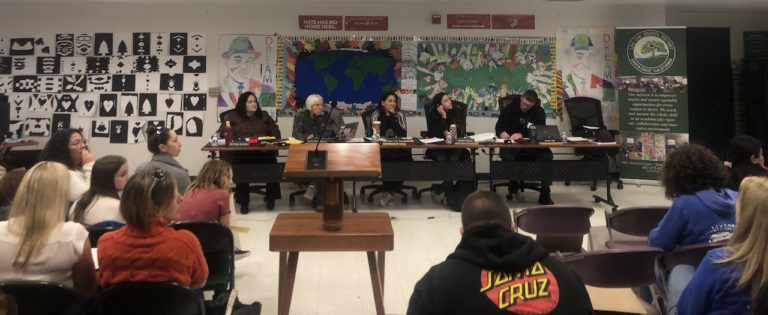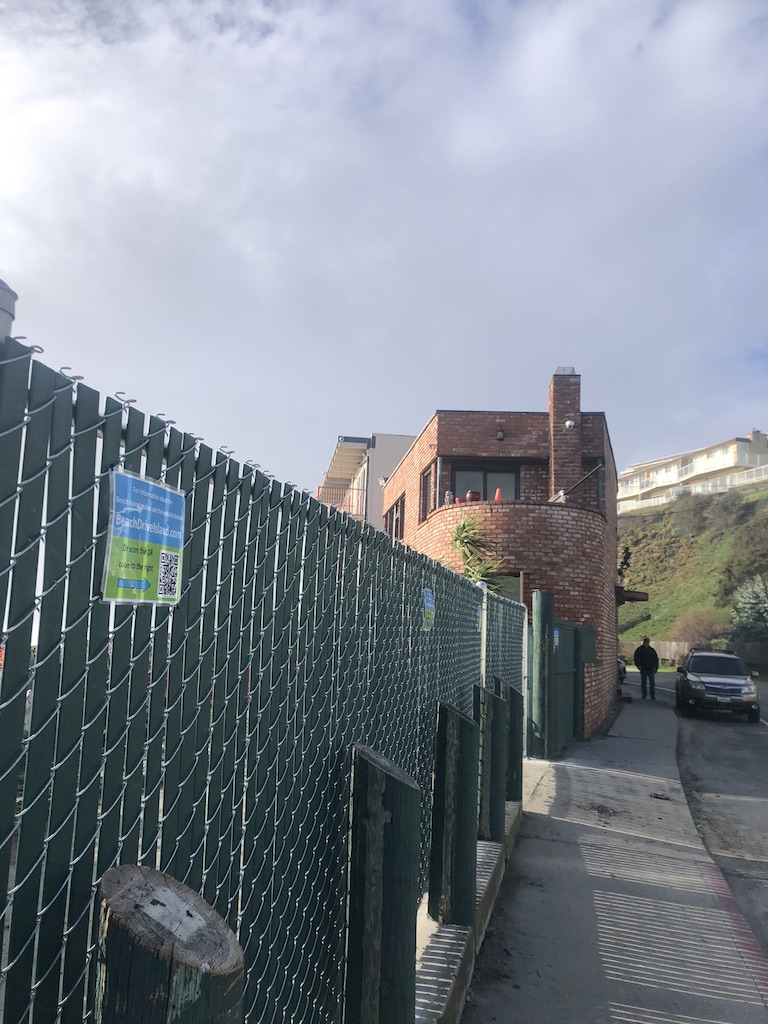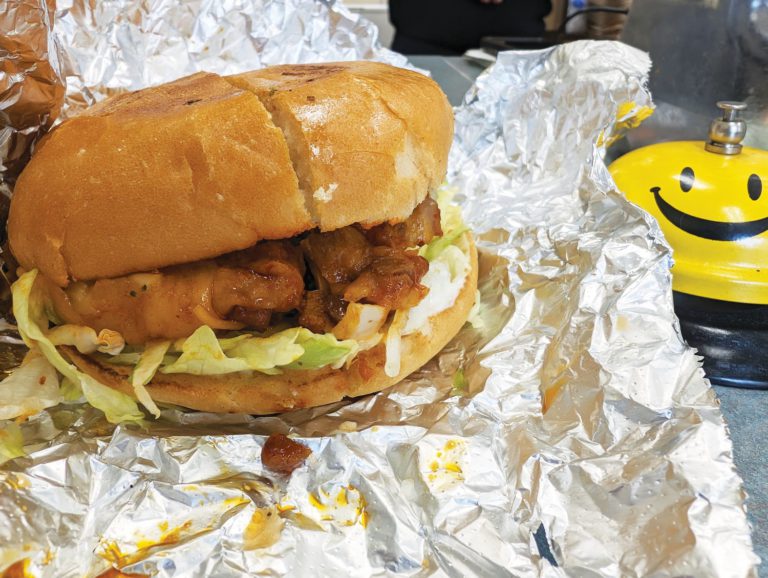This story has been updated
In the aftermath of a fiery Live Oak School District board meeting about layoffs on Feb. 21, a district official has resigned and some parents are calling for the resignation of district Superintendent Daisy Morales.
Human Resources Chief Heidi Odom, a 30-year employee, sent an all-staff email on Feb. 22 to the employees of the Live Oak School District (LOSD) announcing her resignation after her proposed layoffs to the board were voted down at the meeting.
In her email she wrote that she had already planned to resign from the district.
“Yet, it became apparent to me last night after repeated attacks that it was necessary to inform everyone that cabinet members are, in fact, voluntarily taking measures to support the district,” the email read.
The preliminary layoff notices that Odom proposed were to distribute her job’s responsibilities across four other positions.
Parents and teachers were blindsided by the drastic cuts proposed by the school board after the LOSD approved a 5% pay increase for Morales at the last meeting on Feb. 7. The raise, which also applied to the “cabinet,” was rescinded by the board. Morales’s salary is $228,800, according to the 2022-23 Superintendent Salary Schedule.
Some parents and teachers want Morales to resign.
Members of the Green Acres Elementary Parent and Teacher Organization and the Site Council, a parental board that reviews the school’s funding and goals, say they feel Morales kept them out of the loop about the deficit.
Tammy Summers, a member of the Site Council for Green Acres said, “It seems that what they really want is a rubber stamp of parent approval.”
Another member of the Green Acres council, Brooke Bond, said she is an involved parent who volunteers weekly, and she doesn’t understand how someone like her could not have been made aware of the budget crisis until a couple weeks ago.
The parents say that the cuts were directed at teachers, not the administration, which is typical of Morales’ administration.
Board Member Jeremy Ray said he supports Morales: “I do believe her motivations are in the right place. I take responsibility for the situation we are in. I can’t allow parents to single her out.”
The parents will also be setting up a change.org petition— in English and Spanish— to remove Morales, and proposing an alternative financial plan to try and save as many teacher jobs as possible.
The Meeting
At the meeting, an emotional Heidi Odom defended the cumulative 38 job cuts outlined in the preliminary layoff notice. The District has 220 employees.
She said the cuts weren’t final and school district employees who were laid off would have first dibs on future work with the District.
But for the assembled audience of teachers and their supporters that was not good enough.
Douglas Fossum, a local business owner and parent, yelled out, “Sell the property, trim the fat, save the teachers!”
The motion by Board President Kristin Pfotenhauer to approve preliminary layoff notices in preparation for the March 15 state deadline failed to be seconded by anyone on the board.
After the vote, Odom said to this reporter that “insolvency is inevitable” for the school district.
Then it was Morales’ turn to talk.
“I don’t want to do any of these cuts,” said Morales. “But we are held to where we are now because we wanted to keep these positions as closely to the timeline of money expiring as possible.”
Ray, who has served on the Board since 2012, took responsibility for the fiasco, saying the lack of leadership falls on him. Ray missed the last two board meetings.
According to Ray, it all goes back to after the 2008 recession when the district operated on a barebones crew. There were no physical education, music, or art teachers, and the district had built up an emergency 17% cash reserve. Teachers had not gotten a raise in seven years.
This began to change, Ray said, as they started to build some of those positions back by spending down the reserves. Raises followed in the next several years. This wasn’t a problem because attendance was generally flat, and they had fat reserves.
But the pandemic led the board into a false sense of financial security. The state’s financial contributions were based on old attendance numbers as real attendance fell off a cliff, according to Ray.
Thrown together with declining enrollment and the loss of one-time pandemic funds, it was the perfect storm, he said.
Special education costs soared from $2.4 million to $4.5 million this year because LOSD must pay for individual education plans that can sometimes cost as much as $100,000 a student per year. LOSD serves 100 more special education kids than comparable districts in the area.
The board gave the union an approximate 6% raise in each of the last two years as this budget shortfall loomed.
“The problem is our workforce deserved those raises,” wrote Ray in an email. To attract teachers it was necessary to offer the pay raises to stay competitive, he believes.
The next steps according to Ray are unclear. But there is, however, an option on the table that would give the school district a cash infusion—at least in the short term: sell one of its assets.
Another Option
The local nonprofit Community Bridges earlier this month proposed a plan to buy the Elena Baskin Live Oak Senior Center property from the District for $2.4 million. The estimated budget deficit of the LOSD was $2.4 million before it was revised upwards at the Feb. 21 meeting.
The LOSD acquired the senior center through the passage of 2004’s Measure E, a bond measure which allowed the district to purchase it from the county for $2.2 million and has continued to operate it since.
The center is home to the county’s Meal on Wheels program, and also serves as a hub for other senior services. The District had plans to make the center into workforce housing for teachers, which would mean the shuttering of the center.
District officials have claimed that the revenue from a potential sale could not be used to address the budget deficit.
Tony Nuñez-Palomino, communications manager for Community Bridges, disagrees with the District’s notion and said in an interview that Covid-era legislation has made it possible to use the revenue for general purposes.
He emphasized that a potential $800,000 down payment for the senior center could float the school district for the short term and prevent layoffs.
Passed in September 2020, California Senate Bill 820 states that “proceeds from a sale or lease of surplus property can be used for a one-time General Fund purpose.”
Nuñez-Palomino said that his organization is putting the finishing touches on a letter of intent that would formalize its offer.
“No one wants to see teachers and staff members get laid off because that hurts students; it hurts families; it hurts the community, especially in the area,” Nuñez-Palomino said.
Jeremy Ray said it’s complicated.
“It doesn’t put us in a position of strength when we have public calls to just accept the offer,” he said.
The LOSD board will have to press ahead with layoffs in some form by this week or a state takeover will occur.
“There will probably be reductions and reorganization in the District office,” he said. “And although it kills me to say it, we will probably have to ask for concessions from the labor groups. They are under no obligation to reopen their contracts just because the board now realizes we made a mistake, but I think we have to ask.”
The LOSD will hold a parent forum at Live Oak Elementary School this Thursday Feb. 29 at 6:00 p.m. The forum will be followed by a special meeting of the District Board at 7:00 p.m. to discuss a fiscal plan for the budget crisis.






















